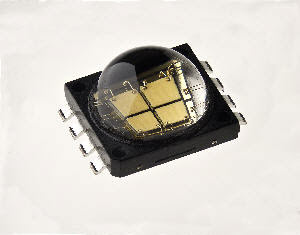Quote:
Originally Posted by
2Quills http:///t/391624/latest-on-the-led-and-my-very-distant-future-upgrade#post_3475954
I can't see many situations where you'd ever need to use optics on any chip over 5 watts for the average hobbyist. Typically the 3,5 and 10 watt leds that have become the most popular are plenty strong enough that once you do throw optics on there you have to be careful not to over power and bleach your corals.
I think you touched on a good point though. I wouldn't build a DIY led fixture with the thought that I'm going to save a good bit of money. On the contrary I'd still plan to put out as much as money as I would for a good halide + T5 combo fixture or quality retro fit components. The ability to make something that for the user is performs well and is easy to maintain over the long run is where the cost/savings come into play. It's easier to keep multiple, smaller components cooler than it is much larger ones that draw more power even if the total power output is the same. And therefore you technicaly could keep them performing better while lasting longer.
Haven't heard many (if any) positive stories about the cheaper import components holding up too well much over a year or two. Some guys though are claiming to be running the same cree leds that they started with over 3 years ago.
A couple points.
Granted, we are NOT talking about PAR here, and we don't need to be, because we are talking about raw light output. I have been doing some testing using LEDS with a light meter. While my testing is not scientific or highly controlled, from approximately 18" above the LEDs, I can more than double my delivered light with optics rather than without. Again, my testing is hardly airtight, but it nevertheless demonstrates the amount of difference that optics can bring to the table.
Of course, if you are using LEDs that are 3+change times as powerful (a 10w vs. a 3w, for example), you may still be able to meet or exceed the amount of light without optics delivered down into the tank. The question is... why? It's a brute force approach. Why would you forego optics, electing instead to waste money, waste energy, and produce more heat? To me, doing this is tantamount to using 100w light bulbs in a room that needs 60w bulbs, and just wearing sunglasses.

I agree that LED technology has advanced to a point where you can easily overdo it. This is a very difficult thing to determine during the build process. However, I will suggest that many people who are suffering this issue are not taking advantage of the capabilities LEDs have over other lighting technolgies. LEDs can be rather easily dimmed, and many of the off-the-shelf drivers that people are using have this capability, but it is not being implemented. Of course, truly building an adaptive and controllable system is beyond the reach of most hobbyists.
Finally, do not get me wrong... I'm certain that you can get perfectly good LEDs off that famous auction site. My experience has been that there are serious risks. Of all of the orders I have placed for LEDs off that site, I have had bad luck with all of them. Now, I use those auction sites where performance, longevity, and reliability are secondary to dirt-cheapedness. DIYing a system can save serious dollars, but what I was trying to say is that people pricing their LEDs at the famous auction site are figuring an artificially low number. I believe it is fully possible to save dollars over a commercial system to DIY, but for most DIYers, this comes at the expense of a lot of the features, namely the timing, ramping, etc, because that sort of control requires a level of electronics knowledge that most folks just don't have.




